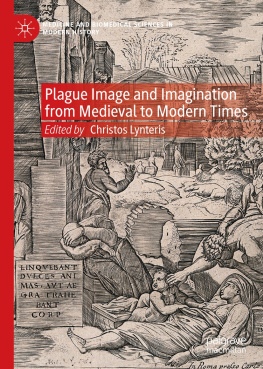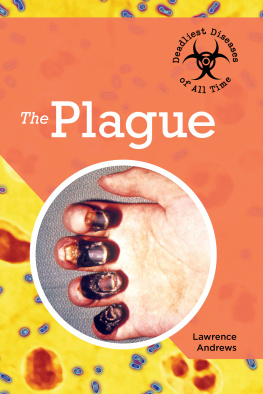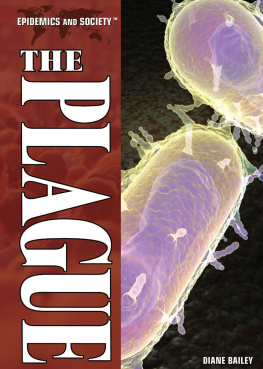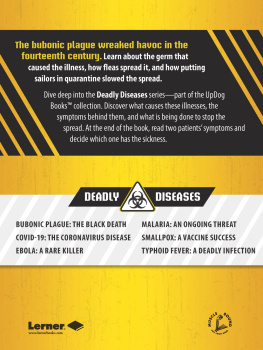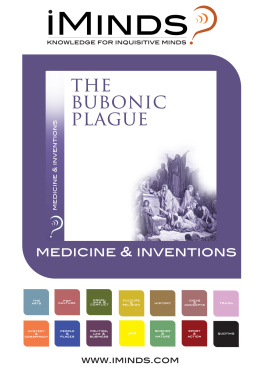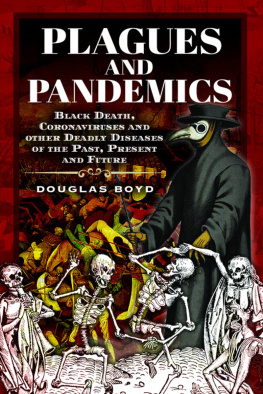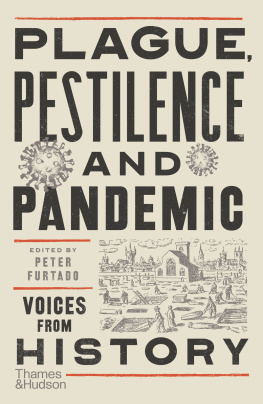Contents
List of Figures
Guide
Pagebreaks of the print version
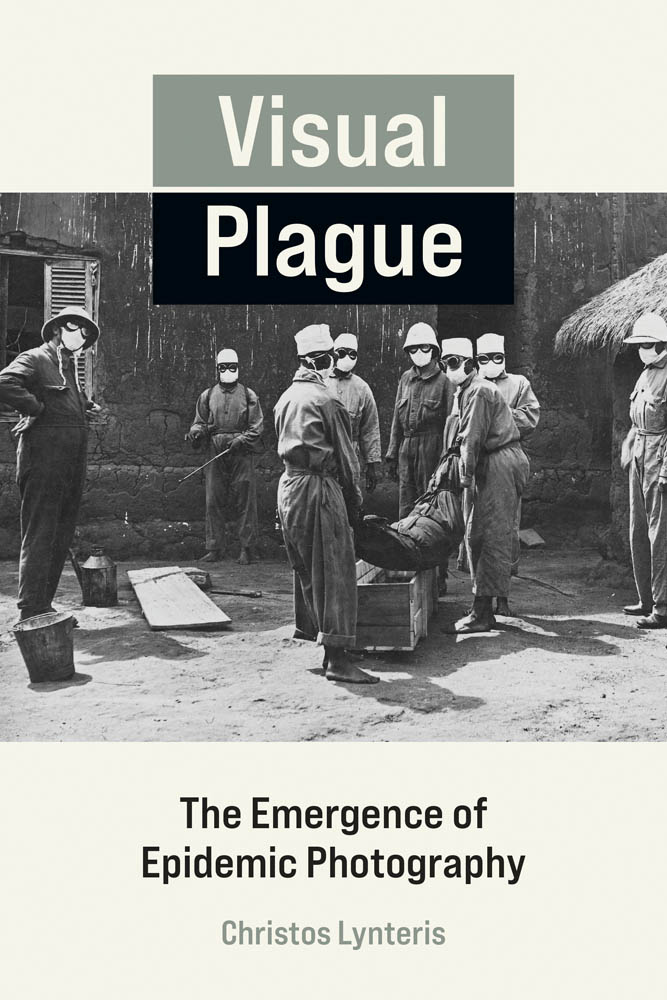
VISUAL PLAGUE
THE EMERGENCE OF EPIDEMIC PHOTOGRAPHY
CHRISTOS LYNTERIS
The MIT Press
Cambridge, Massachusetts
London, England
2022 Massachusetts Institute of Technology
This work is subject to a Creative Commons CC-BY-NC-ND license.
Subject to such license, all rights are reserved.

The MIT Press would like to thank the anonymous peer reviewers who provided comments on drafts of this book. The generous work of academic experts is essential for establishing the authority and quality of our publications. We acknowledge with gratitude the contributions of these otherwise uncredited readers.
Library of Congress Cataloging-in-Publication Data
Names: Lynteris, Christos, author.
Title: Visual plague : the emergence of epidemic photography / Christos Lynteris.
Description: Cambridge, Massachusetts : The MIT Press, [2022] | Includes bibliographical references and index.
Identifiers: LCCN 2021052837 | ISBN 9780262544221 (paperback)
Subjects: LCSH: EpidemicsHistory. | Documentary photography.
Classification: LCC RA649 .L96 2022 | DDC 614.4dc23/eng/20211130
LC record available at https://lccn.loc.gov/2021052837
d_r0
For Voula
CONTENTS
LIST OF FIGURES
An Indian man, a victim of plague in Bombay, lying on a rattan bed in the sunshine, circa 1897.
Injection of anti-plague serum by Dr. Paul-Louis Simond in Karachi, Vishandas Hospital, June 4, 1898.
The Incubation Room. (Plague Section, Haffkine Institute.) Represents over a million doses.
Photograph of plague-induced necrosis in patient in India, included with Nasarwanji Hormusji Choksys 1908 letter to Paul-Louis Simond.
Russian plague scientists conducting an autopsy on a plague-infected camel in Plague Fort.
Dr. Manuil Fedorovich Schreibers necrology.
Laboratory staff in Plague Fort.
Dug-out tarbagan burrow with notes indicating deposited fecal matter and other chamber functions and findings.
At the feet of abandoned houses we have dug a tomb for the dead.
Clean enough to eat from.
Views of Fujiadian from the police watch tower looking eastward and westward.
A crowded alley in Fuchiatien.
Types of insanitary houses in Kumasi, 1924.
Exeter Place Demolished.
Demolition of houses in San Franciscos Chinatown, circa 1900.
Shropshire Regiments Whitewash Brigade, Hong Kong, 1894.
The Great Fire in Honolulu.
Two Million Dollar Blaze Razes Honolulus Chinatown.
Flushing Engine cleansing infected Houses.
External views of the Beirut lazaretto.
Disinfection pavilion in the Tabuk lazaretto.
Mobile latrines in the Tabuk lazaretto.
Intimate scene in one of the lazarettos dormitories, photograph by Gaumont.
Passengers behind the bars of the Frioul lazaretto.
Runchore Segregation Camp, Karachi.
In the Disinfecting Tub, photograph from a Karachi plague camp.
Disinfecting Trans-Lyari, photograph from a Karachi plague camp.
Healthy RatPlague Infected Rat, illustration by Edwin Wilson.
The Only Good Rat Is a Dead Rat.
An Example to India: Exterminating the Microbe- Carrying Rat.
Ernest Henry Grisets 1871 engraving The Terrier and the Rat.
Liverpool Port Sanitary Authority rat-catchers dipping rats in buckets of petrol to kill fleas for plague control.
Killing rats in the port of Buenos Aires.
Mans Friend: the Dog. The Struggle against Rats in the Harbor.
Cover page of Hawaii rat control manual.
By the plague brigade collected hollow bamboo containing rat nests, obtained from Javanese houses.
Figure 19 of the Communicable Disease Centers Rat-Borne Disease Prevention and Control.
Wu Liande, wearing anti-plague masks, front and side views.
Staff of Section III. Doctors and Assistants in front, coolies and carts behind.
Charles Broquet wearing protective clothing against the plague.
Plague doctors costume: Costume dun chirurgien quarantenaire du Lazaret de Marseille, en 1819, which originally appeared in Clot-Bey (1840).
Bonaparte Visitant les Pestifrs de Jaffa by Antoine-Jean Gros, 1804.
Casketing of a dead body by a plague hygiene team in Madagascar c. 1935.
How Science Masks Itself against the Black Plague.
LIST OF ABBREVIATIONS
AIP | Archives de lInstitut Pasteur |
ANOM | Archives Nationales dOutre-Mer |
Apollo/VR3PP | ApolloUniversity of Cambridge Repository, Visual Representations of the Third Plague Pandemic Photographic Database |
BANC | Bancroft Library |
BL | British Library |
HCPP | House of Commons Parliamentary Papers |
HKUL | The University of Hong Kong Libraries (Special Collections) |
IEM | Institute of Experimental Medicine |
NARA | National Archives and Records Administration (United States) |
NLM | National Library of Medicine (United States) |
NLS | National Library of Scotland |
NRI | Joseph Needham Research Institute Library and Archives |
NYAML | New York Academy of Medicine Library |
PIP | Photothque, Institut Pasteur |
WL | Wellcome Library |
ACKNOWLEDGMENTS
Visual Plague is the principal monograph output of my research as the Principal Investigator of the Visual Representations of the Third Plague Pandemic project at the Centre for Research in the Arts, Humanities and the Social Sciences (CRASSH) of the University of Cambridge and the Department of Social Anthropology of the University of St Andrews. I would like to thank Lukas Engelmann, Branwyn Poleykett, Nicholas Evans, Abhijit Sarkar, and Maurits Meerwijk for their wonderful support and contribution to the project, and for over five years of inspiring and challenging discussions on epidemic photography. I would also like to thank Emma Hacking, Teresa Abaurrea, Samantha Peel, Esther Lamb, Nadiya Yefimova, Imke van Heerden, Michelle Maciejewska, Glenn Jobson, Mike Arrowsmith, Gillian Symon, Trish Starrs, Ines Pio, Tim Lewens, Simon Goldhill, and Catherine Hurley for their generous support of and assistance to my project, Oliver Wright and Marie Lemarie for their help with organizing and running the projects annual conferences, Judith Weik for her help in organizing the projects exhibition at the Alison Richard Building, Ted Krawec for his tireless patience and legal advice on the projects database, and Huw Jones, Grant Young, and Peter Sutton-Long for their help and guidance in generating the database as part of Cambridges online institutional repository.
I would also like to thank the projects advisory board members, Sam Barzilay, John Henderson, David Napier, and Frdric Keck, and the speakers and discussants at the projects five annual conferences and associated events for the in-depth dialogue on plague, epidemics, and photography over the course of the project: Ann Carmichael, Jennifer Tucker, Adia Benton, Liora Bigon, Nkhet Varlk, Prashant Kidambi, Justin Champion, Marta Hanson, Andrea Janku, Pavla Jirkova, Diego Ramiro Farinas, Neil Cummins, Carlo Caduff, Maria Antonia Almeida, Annamaria Motrescu-Mayes, Valentina Kharitonova, Nayanika Mathur, Robert Peckham, Romola Davenport, Carole Rawcliffe, Vanessa Harding, Jeremy Boulton, Samuel Cohn, Alison Bashford, David Arnold, Shirlene Badger, Kathryn Berger, Genese Sodikoff, James Fairhead, Rebecca Redfern, Shawn Phillips, Teodora Daniela Sechel, Jos Ramn Marcaida Lpez, Joelle Rollo-Koster, Richard Baxstrom, Irene Galandra Cooper, Amanda Morton, Sheila Barker, Ezra Barzilay, Edna Bonhomme, Nandini Bhattacharya, Amanda Sciampacone, Dionysios Stathakopolous, Lizzie Oliver, Rupert Stasch, Michael Anton Budd, David Luesink, Stan Frankland, Deborah Nadal, Maryon MacDonald, Mathieu Corteel, Meike Wolf, Kevin Hall, Silvia Casini, Luisa Reis Castro, Jacob Steere Williams, Ann H. Kelly, Dora Vargha, Alex Nading, Graham Mooney, Freya Jephcott, Nida Rehman, Stefan Kramer, Anna Afanasyeva, Hannah Brown, Mary Augusta Brazelton, Jacqueline Martinelli, Michael Kosoy, Nils Christian Stenseth, Alexandra Kurlenkova, Lys Alcayna-Stevens, Tamara Giles-Vernick, Guillaume Lachenal, Karen Sayer, Ian Harper, Ilana Lwy, Marissa Mika, John Manton, Saurabh Mishra, Freddie Stephenson, Rohan Deb Roy, Marlee Tichenor, Clare Chandler, Leirs Herwig, Kenneth Gage, Boris Schmid, Michael Begon, Graham Twigg, Rosemary Horrox, and James Bolton.


